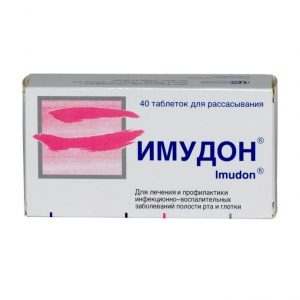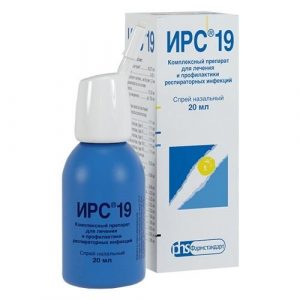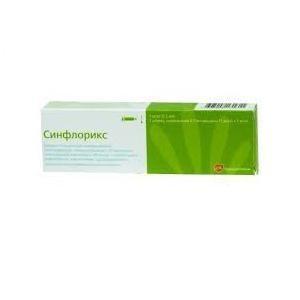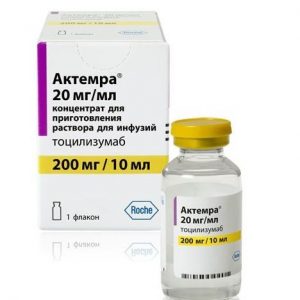Description
Pharmacological action
Yakvinus – selective immunosuppressant. Tofacitinib is a powerful, selective inhibitor of the Janus kinase family, with high selectivity for other kinases in the human genome. According to the results of kinase studies, tofacitinib inhibits Janus kinases 1, 2, 3, and to a lesser extent tyrosine kinase-2. In those cells where the Janus kinases transmit a signal in pairs, tofacitinib preferably inhibits the signal transmission of heterodimeric receptors associated with Janus kinase-3 and / or Janus kinase-1, having functional selectivity for receptors, which transmit signals through pairs of Janus kinase-2. Inhibition of Janus kinase-1 and Janus kinase-3 by tofacitinib blocks signal transmission through common gamma chain receptors for several cytokines, including IL-2, -4, -7, -9, -15 and – 21.
These cytokines play an integrating role in the activation of lymphocytes, their proliferation, functioning and inhibition of signal transmission, which leads to the modulation of various aspects of the immune response. In addition, inhibition of Janus kinase-1 leads to a weakening of signal transmission under the action of additional pro-inflammatory cytokines, such as IL-6 and IFN- . At higher drug exposure, inhibition of Janus kinase-2 signaling leads to inhibition of erythropoietin signaling.
Pharmacodynamic effects of
Treatment with Yakvinus is accompanied by a dose-dependent decrease in circulating natural killer CD16 / 56 +. The estimated maximum reduction is achieved after about 8-10 weeks after the start of therapy. The described changes are usually resolved 2-6 weeks after the end of therapy. Treatment with Yakvinus was accompanied by a dose-dependent increase in the number of b-cells. Changes in the number of circulating T-lymphocytes and their subpopulations were insignificant and variable. The clinical significance of these changes is unknown. The change in the total serum level of IgG, M, and A during the 6-month treatment period for patients with rheumatoid arthritis was small, dose-independent, and similar to that with placebo.
After treatment with patients with rheumatoid arthritis with Yakvinus, a rapid decrease in serum C-reactive protein (C-RB) was observed, which persisted throughout the treatment period. Changes in the level of C-RB observed during treatment with Yakvinus did not occur within 2 weeks after discontinuation of therapy, which indicates a longer pharmacodynamic activity compared with the half-life.
Pharmacokinetics
Absorption and distribution
The pharmacokinetics profile of tofacitinib is characterized by rapid absorption (Cmax is achieved within 0.5-1 h), rapid excretion (T1 / 2 about 3 hours) and dose-proportional increase in systemic exposure. Css is achieved within 24-48 hours with a slight accumulation after taking 2 times / day.
Tofacitinib is well absorbed, its bioavailability is 74%. The use of tofacitinib with a diet rich in fats was not accompanied by changes in AUC, while Cmax in plasma was reduced by 32%. In clinical studies, tofacitinib was used regardless of food intake.
The binding of tofacitinib to plasma proteins is approximately 40%. Tofacitinib is predominantly bound to 1-acid glycoprotein.
It is equally distributed between red blood cells and blood plasma.
Metabolism and excretion
Excretion of tofacitinib by about 70% is carried out through metabolism in the liver and by 30% by excretion by the kidneys in the form of unchanged tofacitinib. Tofacitinib metabolism is predominantly mediated by the CYP3A4 isoenzyme and, to a lesser extent, by the CYP2C19 isoenzyme. In a study of radioactively labeled tofacitinib, more than 65% of the total circulating radioactivity was attributable to unchanged tofacitinib, and the remaining 35% to 8 metabolites (each less than 8% of total radioactivity). Pharmacological activity is associated with non-metabolized tofacitinib.
Pharmacokinetics in patients with rheumatoid arthritis
It was found that in patients with rheumatoid arthritis, AUC tofacitinib with minimum and maximum body weight (40 and 140 kg) were similar to those in patients weighing 70 kg.
In elderly patients aged 80 years, the AUC was less than 5% higher compared with patients aged 55 years.
In women, the AUC of tofacitinib is 7% lower compared to men.
The obtained data also showed the absence of significant differences (<5%) in AUC of tofacitinib in Caucasoid patients, Negroid and Asian race. An almost linear relationship between body weight and Vd has been observed, resulting in higher plasma Cmax and lower Cmin in patients with lower body weight. However, this difference is not considered clinically significant. The interindividual variability (% coefficient of variability) of the AUC for tofacitinib is about 27%. Pharmacokinetics in special clinical cases In patients with mild, moderate, or severe impaired renal function, AUC was 37%, 43%, and 123% higher, respectively, compared with healthy volunteers. In patients with end-stage renal failure, the contribution of dialysis to the total clearance of tofacitinib is relatively small. In patients with mild to moderate impaired liver function, AUC values ² ¹ ² ¹were 3% and 65% higher than those in healthy volunteers. Patients with severely impaired liver function have not been studied. Studies of the pharmacokinetics, safety, and efficacy of tofacitinib in children have not been conducted. Indications Moderate or severe active rheumatoid arthritis in adults with an inadequate response to one or more basic anti-inflammatory drugs (BPV). Contraindications hypersensitivity to tofacitinib or to any other component of the drug Yakvinus. severe liver dysfunction infection with hepatitis B and / or C viruses (presence of serological markers of HBV and HCV infection) KK less than 40 ml / min simultaneous use of live vaccines should be avoided simultaneous use of the drug Yakvinus with biological drugs such as inhibitors TNF, interleukin antagonists (IL-1R, IL-6R), monoclonal anti-CD20 antibodies, selective co-stimulating modulators, as well as powerful immunosuppressants, such as azathioprine, cyclosporine and tacrolimus, since such a combination increases the likelihood of severe immunosuppression and the risk of developing severe infection, active infections, including local pregnancy (safety and effectiveness have not been investigated) breast-feeding children and adolescents under 18 years of age ( safety and efficacy not studied) lactase deficiency, lactose intolerance, glucose-galactose malabsorption. Caution: if there is an increased risk of gastrointestinal perforation (for example, patients with a history of diverticulitis) in elderly patients due to the high risk of developing infectious diseases. Use during pregnancy and lactation Adequate, well-controlled studies of the use of the drug Yakvinus in pregnant women have not been conducted. The ability of tofacitinib to pass into breast milk in humans has not been studied. Breastfeeding should be stopped during treatment with Yakvinus. Special instructions Serious infections In patients with rheumatoid arthritis receiving immunomodulators, including biologicals and Yakvinus, serious and sometimes fatal infections caused by bacterial, mycobacterial, fungal, viral or other opportunistic pathogens are noted. The most common serious infections seen with Yakvinus include pneumonia, inflammation of the subcutaneous tissue, herpes zoster, and urinary tract infections. Among opportunistic infections with the use of the drug Yakvinus, there have been cases of the development of tuberculosis and other mycobacterial infections, cryptococcosis, esophageal candidiasis, herpes zoster with lesions of various dermatomas, cytomegalovirus infection, and also VK virus infection. In some patients disseminated diseases were noted, most often with the simultaneous use of immunomodulators – methotrexate or corticosteroids, which alone and in addition to the underlying disease of rheumatoid arthritis can predispose to the development of infections. Other serious infections are also possible, that have not been reported in clinical trials (e.g. histoplasmosis, coccidioidomycosis, and listeriosis). Jaquinus should not be used in patients with active infection, including local infections. Before using the drug, Yakvinus should assess the risk / benefit ratio of therapy in patients with a chronic or recurring infection, after a history of severe or opportunistic infection with a patient with tuberculosis, in patients who have lived or have recently visited endemic areas of tuberculosis or mycosis, as well as in patients with a predisposition to develop infection. Patients should be closely monitored for signs and symptoms of infection during and after treatment with Yakvinus. Jacquinus should be temporarily discontinued if the patient develops a serious infection, opportunistic infection or sepsis. With the development of a new infection with the use of the drug Yakvinus, the patient is subject to a quick and complete diagnostic examination by analogy with a patient suffering from immunodeficiency. Appointment of appropriate antibacterial therapy is shown, as well as careful dynamic observation. Since older patients are usually more likely to develop infections, caution should also be exercised in such cases. Tuberculosis Before using the drug Yakvinus should be tested for signs of latent or active tuberculosis infection. Before starting therapy with Yakvinus in patients with a history of latent or active tuberculosis, in the absence of confirmation of an adequate course of anti-tuberculosis therapy, as well as in patients with a negative test result for latent tuberculosis, but with the presence of risk factors for tuberculosis infection, appropriate anti-tuberculosis therapy should be carried out. When deciding on the need for anti-TB treatment in each individual patient, it is recommended to consult with a TB doctor. Patients should be closely monitored for signs of tuberculosis, including patients with a negative latent tuberculosis test, prior to initiation of therapy. The incidence of tuberculosis with the use of the drug Yakvinus in the framework of the global clinical development program was 0.1-0.2%. Patients with latent tuberculosis before starting therapy with Yakvinus are subject to standard antimycobacterial therapy. Reactivation of viral infections Reactivation of viral infections has been described with the use of treatment for BVD. Cases of reactivation of the herpes virus (for example, herpes zoster) are also described in clinical trials of the drug Yakvinus. The effect of Yakvinus on the reactivation of chronic viral hepatitis is unknown. Patients with a positive test for hepatitis B and C were excluded from clinical trials. Before starting therapy with Yakvinus, a screening should be made for the presence of viral hepatitis. Malignant and lymphoproliferative diseases (with the exception of non-melanoma skin cancer) It is possible that Jakvinus affects the body’s defense against malignant neoplasms. The effect of Yakvinus therapy on the development and course of malignant neoplasms is unknown. however, in the clinical studies of this drug, cases of the development of malignant neoplasms were recorded. Non-melanoma skin cancer (FCNM) Cases of FCNM have been reported in patients receiving tofacitinib therapy. It is recommended that a periodic skin examination be performed in patients at increased risk of developing skin cancer. Cases of gastrointestinal tract perforation Clinical trials of patients with rheumatoid arthritis have described cases of gastrointestinal tract perforation, although the role of inhibition of Janus kinase in these phenomena is unknown. Such cases have mainly been described as diverticulum perforation, peritonitis, abscess, and appendicitis. All patients who developed gastrointestinal perforation received concomitant therapy with NSAIDs and / or corticosteroids. The relative contribution of concomitant therapy and the use of the drug Yakvinus with the development of perforation of the digestive tract is unknown. Jaquinus should be used with caution in patients with an increased risk of gastrointestinal perforation (for example, patients with a history of diverticulitis). Patients with new symptoms from the digestive tract are subject to immediate examination for early detection of perforation of the digestive tract. Laboratory findings Neutrophils: treatment with Yakvinus was accompanied by an increase in the incidence of neutropenia (less than 2000 / Ñl) compared with placebo. Yakvinus treatment of patients with a low concentration of neutrophils (AHP less than 1000 / Ñl) is not recommended. In patients with a persistent reduction in ACN to 500-1000 / Ñl, the dose of Yakvinus should be reduced or treatment should be stopped until the ACN concentration reaches more than 1000 cells / Ñl. In patients with an absolute neutrophil count of less than 500 / Ñl, treatment is not recommended. The level of neutrophils should be monitored after 4-8 weeks of therapy, and then every 3 months. Hemoglobin: It is not recommended to start therapy with Yakvinus in patients with low hemoglobin (less than 90 g / l). Treatment with Yakvinus should be discontinued in patients with a hemoglobin level of less than 80 g / l, or with a decrease in hemoglobin level of 20 g / l or more during treatment. Hemoglobin should be monitored at the initial stage of therapy, after 4-8 weeks of therapy, and then every 3 months. Lipids: treatment with Yakvinus is accompanied by an increase in blood lipids – total cholesterol, LDL cholesterol, and HDL cholesterol. The maximum effect was usually observed within 6 weeks. Evaluation of lipid parameters should be performed after about 4-8 weeks after the start of therapy. The use of statins in patients with an increased concentration of total cholesterol and LDL cholesterol during therapy with Yakvinus allows you to achieve baseline values. Vaccination Information on the response to vaccination or secondary transmission of the infection when administering live vaccines to patients receiving Yakvinus is still not available. It is not recommended to administer live vaccines simultaneously with the drug Yakvinus. Recommended so that before the use of the drug Yakvinus, all patients have completed the necessary immunization in accordance with modern vaccination recommendations. Patients with impaired renal function In clinical trials, the drug Yakvinus was not studied in patients with baseline CC <40 ml / min. Influence on the ability to drive vehicles and control mechanisms Studies of the effect of the drug Yakvinus on the ability to drive a car and work with mechanisms have not been conducted. Composition 1 film-coated tablet contains: active ingredient: tofacitinib citrate 8.078 mg, which corresponds to the content of tofacitinib 5 mg, excipients: microcrystalline cellulose – 122.615 mg, lactose monohydrate – 61.307 mg, k magnesium stearate – 2 mg. film composition: white opadry – 6 mg (hypromellose – 2.4 mg, titanium dioxide – 1.5 mg, lactose monohydrate – 1.26 mg, macrogol – 0.48 mg, triacetin – 0.36 mg). Side effects of The most common serious adverse reactions seen with tofacitinib therapy were serious infections. The most frequent adverse reactions during the first 3 months of controlled clinical trials (with the development of more than 2% of patients treated with Yakvinus monotherapy or its combination with NSAIDs) included upper respiratory tract infections, headache, nasopharyngitis and diarrhea. Discontinuation of therapy due to any adverse reaction during double-blind, placebo-controlled studies was required in 6. 8% of cases for patients from the Yakvinus group and 3.7% for patients from the placebo group. The most frequent adverse reactions that led to the withdrawal of the drug Yakvinus, were infections. The most common infections leading to discontinuation of therapy included herpes zoster and pneumonia. In each frequency group, adverse reactions are presented in decreasing order of severity. Infections and parasitic infestations: very often – nasopharyngitis often – pneumonia, herpes zoster, bronchitis, influenza, sinusitis, urinary tract infections, infrequent pharyngitis – sepsis, bacterial pneumonia, pneumococcal pneumonia, pyelonephritis, inflammation of the subcutaneous gastrointestinal virus, hypodermic gastrointestinal virus infection Herpes simplex rarely – CNS tuberculosis, encephalitis, necrotizing fasciitis, cryptococcal meningitis, disseminated tuberculosis, urosepsis, pneumonia caused by Pneumocystis jiroveci, staphylococcal bacteremia, tuberculosis, bacterial arthritis, atypical infection caused by mycobacteria, infection caused by the Mycobacterium avium complex, cytomegalovirus infection, bacteremia. From the cardiovascular system: often – increased blood pressure. From the digestive system: often – abdominal pain, vomiting, gastritis, diarrhea, nausea, dyspepsia infrequently – liver steatosis. From the side of metabolism: often – hyperlipidemia, dyslipidemia infrequently – dehydration. From the side of the nervous system: often – headache, insomnia infrequently – paresthesia. From the musculoskeletal system: often – pain in the muscles and bones, arthralgia infrequently – tendonitis, swelling of the joints, muscle tension. From the hemostatic system: often – leukopenia, anemia infrequently – neutropenia. From the respiratory system: often – shortness of breath, cough infrequently – congestion in the sinuses. From the skin: often – rash infrequently – erythema, skin itching. Benign, malignant, and unspecified neoplasms (including cysts and polyps): infrequently, skin cancer not associated with melanoma. Laboratory and instrumental indicators: often – an increase in the activity of liver enzymes, CPK, an increase in the concentration of LDL, blood cholesterol (in clinical trials were first noted after the first month of therapy and later remained stable), increased body weight infrequently – increased transaminase activity, increased creatinine concentration in blood plasma, increased concentration of GGTP, impaired liver function tests. Other: often – fever, fatigue, peripheral edema. Drug interactions Interactions affecting the use of the drug Yakvinus Since tofacitinib is metabolized by the CYP3A4 isoenzyme, it is highly likely to interact with drugs that inhibit or induce this isoenzyme. With simultaneous use with potent inhibitors of the CYP3A4 isoenzyme (e.g., ketoconazole), and with simultaneous use with one or more moderate inhibitors of the CYP3A4 isoenzyme and potent inhibitors of the CYP2C19 isoenzyme (eg, fluconazole), exposure to tofacitinib increases. The simultaneous use of ketoconazole (a potent inhibitor of the CYP3A4 isoenzyme) and a single dose of tofacitinib increases AUC and Cmax of tofacitinib by 103% and 16%, respectively. The simultaneous use of fluconazole (a moderate inhibitor of the isoenzyme CYP3A4, as well as a potent inhibitor of the isoenzyme CYP2C19) increases AUC and Cmax of tofacitinib by 79% and 27%, respectively. When used simultaneously with powerful inducers of the CYP3A4 isoenzyme (for example, rifampicin), exposure to tofacitinib is reduced. The simultaneous use of rifampicin (a powerful inducer of the isoenzyme CYP3A4) reduces the AUC and Cmax of tofacitinib by 84% and 74%, respectively. The likelihood of inhibitors of the isoenzyme CYP2C19 or P-glycoprotein on the pharmacokinetics of tofacitinib is low. The simultaneous use of tacrolimus (a weak inhibitor of the isoenzyme CYP3A4) increases the AUC of tofacitinib by 21% and reduces the Cmax of tofacitinib by 9%. The simultaneous use of cyclosporine (a moderate inhibitor of the CYP3A4 isoenzyme) increases the AUC of tofacitinib by 73% and reduces the Cmax of tofacitinib by 17%. The simultaneous multiple use of tofacitinib and powerful immunosuppressants in patients with rheumatoid arthritis has not been studied. Concomitant use with methotrexate (15-25 mg methotrexate once a week) does not affect the pharmacokinetics of tofacitinib. An interaction in which Yakvinus affects the pharmacokinetics of other drugs In vitro studies have shown that tofacitinib in concentrations even more than 150 times higher than Cssmax, which is achieved when used in recommended therapeutic doses, does not significantly inhibit or induce the activity of the main drugs metabolized by the isoenzymes CYP1A2, CYP2B6, CYP2C8, CYP2C9, CYP2C19, CYP2D6 and CYP3A4. These results were confirmed by in vitro studies of drug interactions, which showed the absence of pharmacokinetics of midazolam, a highly selective substrate of the CYP3A4 isoenzyme, with simultaneous use with tofacitinib. In vitro data showed that the ability of tofacitinib at therapeutic concentrations to inhibit such carriers as P-glycoprotein, organic anionic or cationic carriers is very low. Concomitant use with tofacitinib did not affect the pharmacokinetics of oral contraceptives, levonorgestrel and ethinyl estradol in healthy women. Concomitant use of tofacitinib with methotrexate at a dose of 15-25 mg 1 time / week. decreased AUC and Cmax methotrexate by 10% and 13%, respectively. These changes in the pharmacokinetics of methotrexate did not require dose adjustment or the selection of individual doses of methotrexate. In patients with rheumatoid arthritis, the clearance of tofacitinib did not change over time. This suggests that tofacitinib does not affect the activity of CYP isoenzymes in patients with rheumatoid arthritis. Thus, it is unlikely that the simultaneous use of substrates of CYP isoenzymes with tofacitinib will lead to a clinically significant increase in their metabolism in patients with rheumatoid arthritis. Overdose There is no experience of overdose when using the drug Yakvinus. Treatment is symptomatic and supportive. In case of an overdose, it is recommended that the patient’s condition be monitored for signs and symptoms of adverse reactions. With the development of adverse reactions, appropriate therapy should be prescribed. There is no specific antidote. Pharmacokinetic data from healthy volunteers who received single doses up to 100 mg indicate that about 95% of the administered dose is excreted within 24 hours. Storage conditions The drug should be stored out of the reach of children at a temperature not exceeding 25 ° C. Expiration 2 years. Deystvuyuschee substances Tofatsytynyb Conditions of supply of pharmacies Prescription Dosage Form tablets




